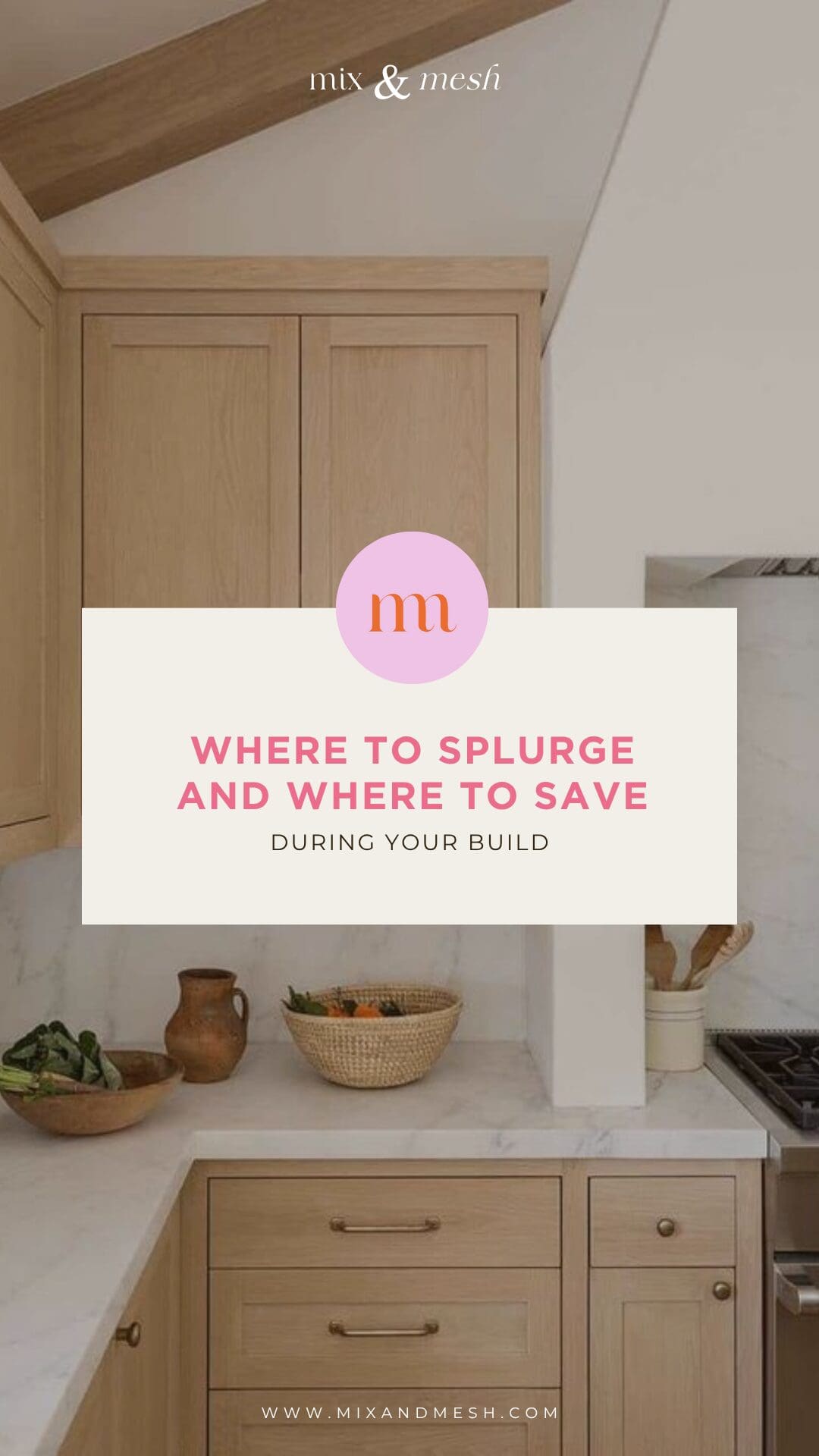Let’s be real — nobody wants to blow their entire finish budget on something they end up hating six months later.
When you’re designing a home, it’s easy to get pulled in by beautiful options. But with every faucet, tile, and cabinet line item adding up fast, the real challenge becomes: Where do I invest? And where can I scale back without it looking cheap?
That’s what we’re digging into today.
This post will walk you through how to think strategically about where your dollars go — so you end up with a home that feels elevated and budget-smart.
This post is part of my 7-Day Finish Confidence Challenge, a step-by-step series to help you make thoughtful, grounded selections throughout your build or remodel. But even on its own, this one’s packed with value.
Step 1: Spend Where it Counts Long-Term
When I work with clients, I always say — focus on the finishes that are hardest to change later. These are the things you want to get right the first time.
Here’s where that investment really matters:
Windows + doors
Better materials here impact your energy bills, your comfort, and the sound quality inside your home. Worth the splurge.
Flooring
It runs through your entire home and impacts comfort, resale, and everyday living. Replacing it down the road? A major disruption. Go for quality now.
Cabinet construction
Cabinetry is one of the biggest finish expenses — and it touches almost every room. Even if you save on the door style or finish, invest in durable cabinet boxes and soft-close hardware.
Plumbing + electrical (behind the walls)
These aren’t visible, but they’re essential. Poor-quality fixtures or rushed wiring can lead to future leaks, repairs, or replacements — which are always more expensive than getting it right upfront.
Pro tip: If you’d have to rip something open or live in a construction zone to redo it — it probably belongs on your splurge list.
Step 2: Save Where it’s Easy to Upgrade Later
Here’s the good news: you don’t need to spend big on everything to create a cohesive, stylish home.
Some finishes are simple to update later when time and budget allow — so you can focus on getting the bones right now.
A few smart save-now, upgrade-later areas:
- Lighting fixtures
As long as the electrical plan is solid, you can easily swap fixtures as your style (or budget) evolves. Start with basics, and upgrade as you go. - Decorative tile locations
Save the high-end statement tile for focal points like niches, backsplashes, or powder baths. Use budget-friendly tile in larger, less visible areas. - Paint instead of wallpaper
You can create high-impact color moments with just paint — think two-tone walls, arch shapes, or color-blocking. No wallpaper budget required. - Cabinet finishes or door styles
You can often start with a simple cabinet door style and elevate the look with great hardware or a beautiful color down the line. - Engineered materials
Materials like quartz countertops or engineered flooring often give you the look of something custom or natural, but with better durability and a friendlier price point.
Step 3: If You’re Working with a Builder, Understand Allowances
If you’re in a builder-grade or semi-custom process, there’s a good chance you’re working with material allowances — meaning you’ve got a fixed budget for each category, like flooring or lighting.
Here’s what I recommend:
- Ask your builder for a breakdown of what’s included in each allowance (Is it $4/sq ft for flooring? $300 per plumbing fixture?)
- Clarify whether the allowance includes labor or is for materials only
- Check which vendors you’re allowed to choose from, and what pricing tiers apply
Pro tip: Don’t wait until your showroom appointment to realize your dream tile is three times over budget. Knowing your range ahead of time gives you freedom to plan — and upgrade intentionally.
Why This Step Matters
Budgeting isn’t about saying no to the things you love — it’s about being clear on where they’ll have the most impact.
By identifying what’s worth investing in today, and what can wait, you give yourself room to breathe financially while still ending up with a home that feels thoughtful and high-end.
This kind of strategy not only protects your wallet — it protects your peace of mind during the build.
Ready for What’s Next?
👉 Day 04: How to Find Your Interior Design Style (And Stick to It)
Need help sorting priorities or reviewing your build budget? You can book a 1:1 design call or check out DesignDirect for quick access to design coaching as decisions pop up.
